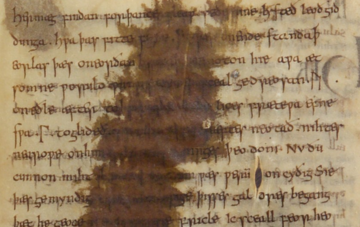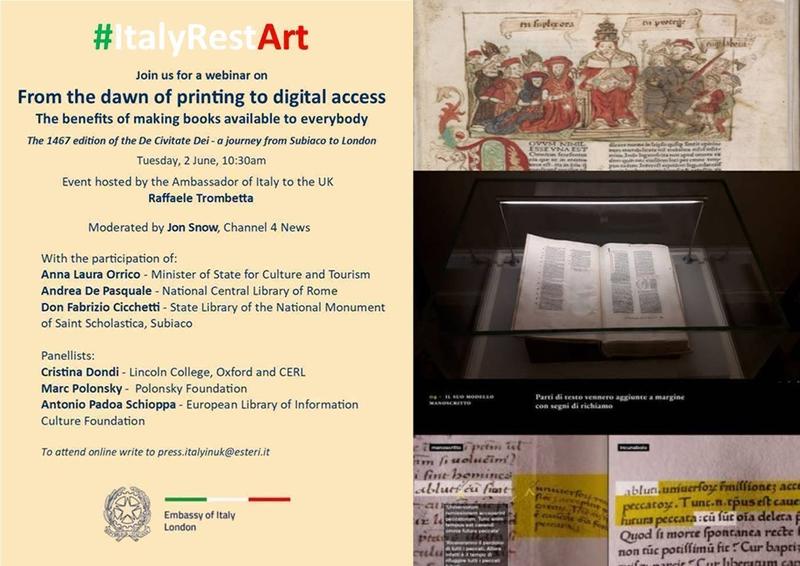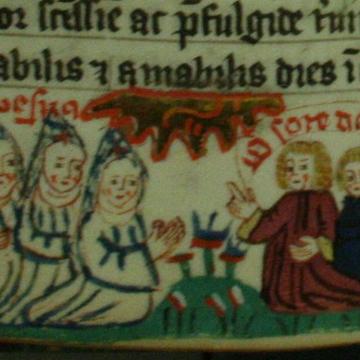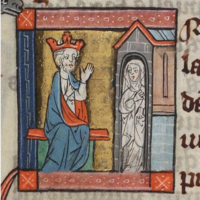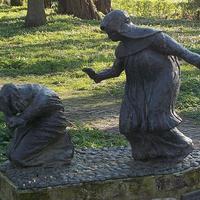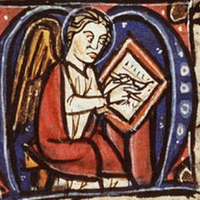By Adam Whittaker
Reblogged from The Conveyor.
‘Writing about music is like dancing about architecture’, or so the famous phrase goes. And yet, we have been writing about music for centuries. We are fortunate to have such a range of medieval and Renaissance writings on music that survive, from luxurious presentation volumes to scrappy single sheets pasted into miscellaneous collection. Although we often see quite stable transmission of texts across multiple sources (sometimes across centuries), we see much greater variation in the examples and diagrams. These, it seems, were fair game for change, revision, and emendation for specific readerships and local contexts, or simply at the whim of the scribe. My research explores why these differences matter.
In the autumn of 2019 I was in Oxford as the Albi Rosenthal Visiting Fellow in Music at the Bodleian Libraries. During my fellowship, I consulted a number of music theory manuscripts, including MS. Bodley 515 and MS. Digby 90. These manuscripts contain the famous Quatuor principalia musice [Four Fundamentals of Music], most likely authored and/or compiled by the English friar John of Tewkesbury in the late fourteenth century.
First, let’s look at one similarity. Early in the text, the theorist uses a monochord (a theoretical instrument of a single string) to explain the interval of a tone; a musical step in layman’s terms, as though moving from G to A on a piano. Both sources have a functionally similar diagram, even if there are some subtle visual differences.

Bodleian MS. Bodl. 515, fol. 10r (detail)

Bodleian MS. Digby 90, fol. 11v (detail)
We can see that both manuscripts show a monochord (horizontal line representing a string); both indicate the interval of a tone between G (low G) and A with an arc labelled ‘tonus’; and both have the indication ‘monochordu[m]’ at the left-hand edge of the diagram. Bodl. 515 shows a more artistic approach to this diagram, with its coloured labels and decorative circles, whilst MS. Digby 90 favours equal tonal spacing with notches. Despite these differences, which might be attributed to scribal taste more than anything else, the reading experience across the two sources is near identical.
However, such similarity isn’t always present. If we look at the depiction of the Guidonian hand – a kind of conceptual map for musical space that is commonplace in music theory texts – we see both similarities and differences. The Guidonian Hand mapped the six-note intervallic pattern (ut-re-mi-fa-sol-la) onto physical locations on the body which a singer could use as a memory aid while they sang. To think about how the Hand works in practice, The Sound of Music’s ‘Do-Re-Mi’ is especially helpful. Let’s consider the diagrams presented in the two sources.

Bodleian MS. Digby 90, fol. 21r (detail)

Bodleian MS. Bodl. 515, fol. 23r (detail)
There are some important differences here. You’ll notice that MS. Bodl. 515 is missing labels on joints, whilst these are clearly visible in MS. Digby 90. These are crucial! Without the syllabic markings on the joints of the thumb and fingers, this diagram serves little demonstrative function, beautiful as it is. Such a scenario poses some interesting questions and might have left fifteenth-century readers scratching their heads. Is this just a scribal error? Was this aspect of the diagram to be entered in a different layer? Did the scribe not understand the diagram they copied? Was there an error in the exemplar copy that a scribe couldn’t resolve? What use is the diagram when it is missing such key information?
This last question is of particular importance for the final comparison I want to make here. The relationship between musical durational values is a fundamental building block of music notation. Early musical notations were more context-dependent, with the same note shape being worth two or three counts depending upon the context. Theorists found many intriguing ways to discuss this phenomenon, but the most interesting for the present discussion is the idea of a note value tree.
Some contemporaneous musical treatises refer to the ‘arbor’ of Johannes de Burgundia, a figure about whom we know nothing except for a passing reference to his ‘arbor’ in a musical treatise by Petrus de Picardia (fl. 1250). Both our sources include a diagram of this type, though we see some divergence in approach. In MS. Digby 90, we see the relationships made clear in a quasi-tabular format (largest values at the bottom), with lines connecting the related mensural levels. Working from the bottom up we see that the largest note value divides into three parts, which itself is divided into three smaller parts etc.:

Bodleian MS. Digby 90, fol. 45r (detail)
By comparison, we see something which takes the tree much more to heart in MS. Bodl. 515:

Bodleian MS. Bodl. 515, fol. 49v
The visual appeal of this is important. MS. Bodl. 515 offers hatched details on the trunk of the diagram, with additional coloured detailing which has faded over time. In this way, the longest note becomes the ‘root’ of the tree, and its subdivisions into smaller notes become represented as branches, themselves with sub-branches. Although both sources adequately demonstrate the theoretical point, the subtly different diagrams change the nature of the text–image relationship. The tree-like construction of MS. Bodl. 515 creates a sharp mental picture for a reader to recall. MS. Digby 90, though equally clear, establishes a different mensural picture. These diagrams demand different reading practices and present theoretical material in divergent ways.
My point here is not to assign greater value to either source, but to demonstrate that what might be dismissed as ‘minor scribal variants’ really matter when we consider how a reader might engage with a text in a specific manuscript source. If a diagram containing such foundational information that was common knowledge to expert readers, then why did a scribe go such significant effort to present this in a visually appealing manner? The reader’s experience of the same text in these two sources would have been quite different. Through this lens we begin to see the way that the materiality of music theory texts is at least as important as the contents of the texts themselves, and that the diagrams and examples give us an unparalleled insight into this. These theoretical ideas are alive in the manuscripts that preserve them.
Adam Whittaker is Head of Pedagogy and Lecturer in Music at the Royal Birmingham Conservatoire.
